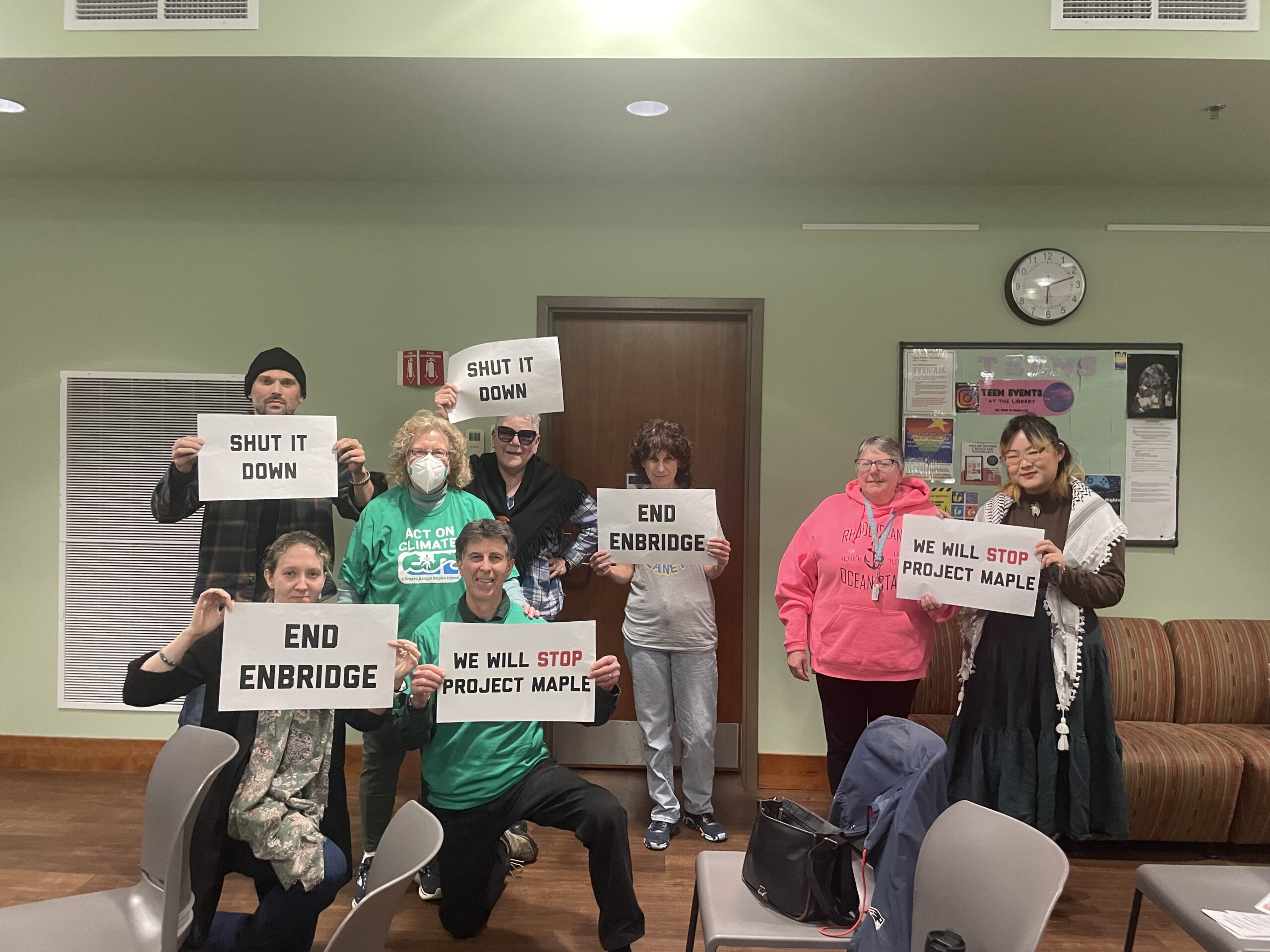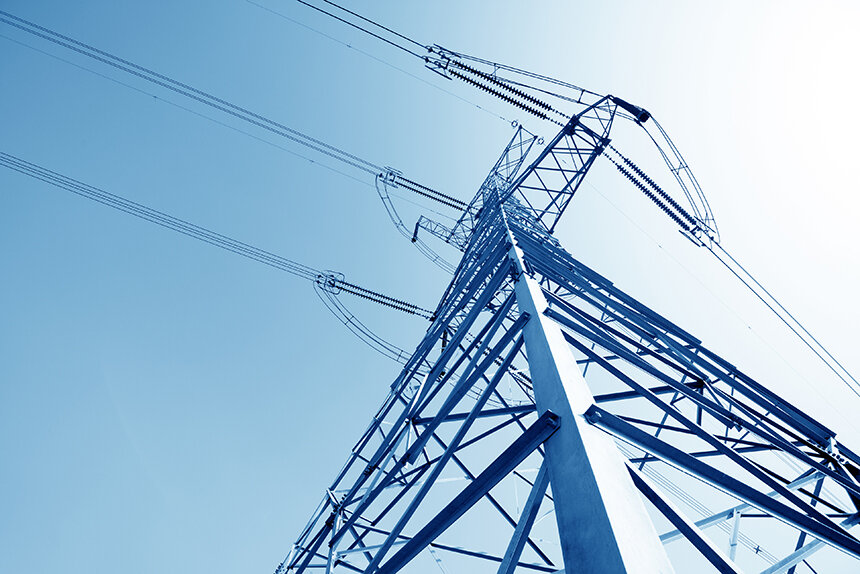Rural Rhode Island at Heart of Region’s Natural Gas Debate
Opponents say more fossil fuels not the answer to region’s energy needs
August 9, 2015
BURRILLVILLE, R.I. — The unofficial epicenter of Rhode Island’s heavy consumption of natural gas is this rural town on the state’s northeastern border with Massachusetts and Connecticut. It hosts the largest power plant in the state, and a proposal announced Aug. 4 would add a second natural gas power plant, with nearly twice the electricity capacity than the existing facility.
This town of 16,000 also is the gateway for two natural gas pipelines that fuel the Northeast, as well as two compressor stations. One of which, the large, rumbling Algonquin compressor station, is undergoing a major expansion. If approved, the new Clear River Energy Center would be next to the compressor facility.
Opponents of this proposed natural gas power plant say the project will disrupt Burrillville and increase the risk of accidents and pollution from emissions and pipeline operations.
“They want to rape our water, our air and our land,” local resident Amanda Mainville said during a recent protest against the proposed power plant.
Local environmental groups such as Fight Against Natural Gas (FANG) and Burrillville Against Spectra Energy dislike the fact that the power project would be fueled by natural gas extracted through hydraulic fracturing (fracking), a controversial drilling method that causes pollution.
When asked if Rhode Island is endorsing fracking by burning the fossil fuel obtained through that extraction method, Gov. Gina Raimondo told ecoRI News, “I think it is just the reality of the situation.” She then pivoted, adding, “We can’t let natural gas slow our effort to move to renewable [energy projects].”
Raimondo supports natural gas as the fuel of choice until the renewable energy sector gains ground.
Meanwhile, developers are embracing new incentives for building solar, and to a lesser extent wind, projects. But currently, only about 1 percent of electricity generated in Rhode Island comes from those two sources. To close the gap with fossil fuels, state lawmakers and energy officials plan to increase energy-efficiency incentives and advocate for importing more renewable energy, such as hydropower from Maine and Canada.
The Clear River power plant would be expected to generate electricity from natural gas for up to 40 years. Most climate scientists predict that industrialized countries have much less time than that to drastically reduce their carbon emissions before the impacts of climate change intensify.
Raimondo supports pipeline expansion and natural gas projects, and intends to push for more, along with the other five New England governors, to increase the amount of natural gas in the region and reduce prices.
John Niland, a developer for the proposed Clear River power plant, acknowledged that natural gas for the project will come from the Marcellus shale gas fields of Ohio and Pennsylvania.
Without the advent of fracking, he said, much of the country would still be burning coal and using nuclear power. “It’s certainly much more environmentally responsible and friendly than those other alternatives,” Niland said.
Emerging research from the Environmental Protection Agency (EPA) shows that fracking causes air pollution and pollutes surface water and groundwater. Compressor stations also are prone to fires and explosions, and are known to release unsafe levels of the carcinogen benzyne and other harmful emissions.
Robert Malin of the Sierra Club of Rhode Island said, “There’s a myth in Rhode Island that we can use natural gas and we’re not part of the problem.”
When asked if she would support fracking in Rhode Island if the state had its own natural gas deposits, Raimondo said, “I don’t answer hypotheticals. But if you can find some source [of natural gas] then I will talk to you.”
Categories
Join the Discussion
View CommentsRecent Comments
Leave a Reply
Related Stories
Your support keeps our reporters on the environmental beat.
Reader support is at the core of our nonprofit news model. Together, we can keep the environment in the headlines.
We use cookies to improve your experience and deliver personalized content. View Cookie Settings




“We can’t let natural gas slow our effort to move to renewable (energy projects),” says our governor. That’s why we build a 30 mega Watt wind farm off Block Island, while we plan a 900 mega Watt facility in Burrillville. Thirty points for fracked gas and one for wind. Words are cheap, Governor.
" Natural gas emits as much as 60 percent less carbon pollution than coal and oil power plants." This information is only half the story: it fails to take into account that fracked gas escapes. If this fugitive gas is taken into account, fracked gas per unite of energy generated is worse that coal and oil. See http://tinyurl.com/meth-bridge for more.
The political problem here is that electric and heating costs here in RI are already very high and partly blamed on constricted gas supplies. The recent high increase in electric rates that National Grid imposed produced quite an outcry, both from low income advocates and from the business community and politicans that see it making the cost of doing business in RI less competitive. And with Block Island wind power coming in at 24.4 per kwh (compared to 10.1 cents from the Grid, even less from North American Power) they don’t see renewable energy as a solution for now.
Yet with fires raging, ice melting, freak storms increasing, the need to reduce fosil fuel use is becoming cleraer and more urgent. So I think we have to find a way to do this that doesn’t put RI, and perhaps our region, at more of a competitive disadvantage.